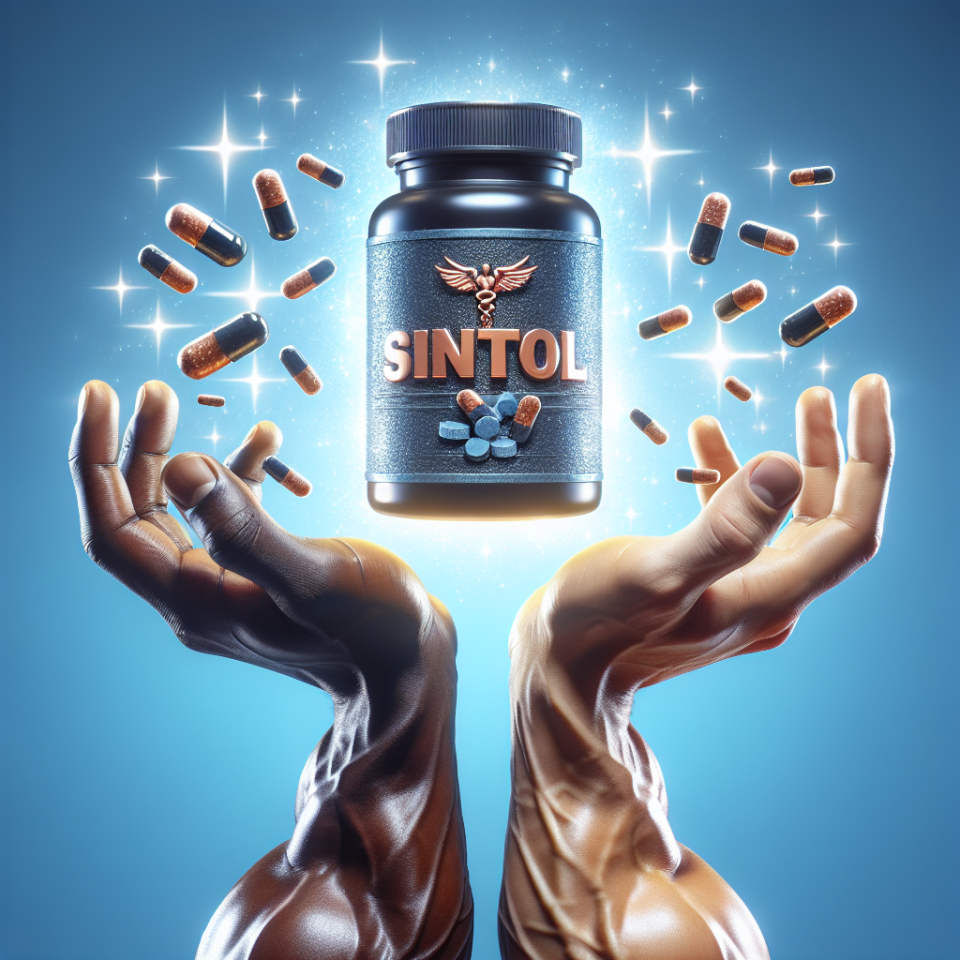-
Table of Contents
Sintol: The Performance-Enhancing Supplement for Athletes
Athletes are constantly seeking ways to improve their performance and gain a competitive edge. While proper training, nutrition, and rest are essential for athletic success, some athletes turn to performance-enhancing supplements to give them an extra boost. One such supplement that has gained popularity in recent years is Sintol.
What is Sintol?
Sintol, also known as Synthol, is a synthetic oil-based substance that is injected directly into muscles to enhance their appearance and size. It is composed of 85% medium-chain triglycerides (MCTs), 7.5% lidocaine, and 7.5% benzyl alcohol. Originally developed for medical purposes, Sintol has gained notoriety in the bodybuilding community as a quick and easy way to achieve a more muscular physique.
How Does Sintol Work?
Sintol works by causing localized inflammation and swelling in the injected muscle, giving the appearance of increased muscle size. The MCTs in Sintol are quickly metabolized by the body, leaving behind a residue of fatty acids that can contribute to the appearance of muscle fullness. The lidocaine in Sintol acts as a local anesthetic, reducing pain and discomfort during and after the injection. The benzyl alcohol acts as a preservative to prevent bacterial growth in the oil-based solution.
Is Sintol Safe?
While Sintol may seem like a quick and easy way to achieve a more muscular physique, it comes with significant risks and potential side effects. The injection of foreign substances into the body can lead to serious health complications, including nerve damage, infections, and even death. Additionally, the use of Sintol is banned by most sports organizations, and athletes who test positive for it may face severe consequences, including disqualification and loss of medals or titles.
Real-World Examples
One of the most well-known cases of Sintol use in sports is that of Brazilian bodybuilder Romario Dos Santos Alves. In an interview with the Daily Mail, Alves admitted to injecting Sintol into his arms, chest, and shoulders to achieve a more muscular appearance. However, his excessive use of the substance led to severe infections and almost resulted in the amputation of his arms. Alves has since stopped using Sintol and has warned others about the dangers of the substance.
In another case, professional bodybuilder Rich Piana openly admitted to using Sintol to enhance his muscle size. However, he also suffered from severe complications, including nerve damage and infections, which ultimately led to his death in 2017. These real-world examples serve as a cautionary tale for athletes considering the use of Sintol.
Pharmacokinetics and Pharmacodynamics
The pharmacokinetics of Sintol are not well-studied, as it is not a medically approved substance. However, it is known that the MCTs in Sintol are quickly metabolized by the body, leaving behind fatty acid residues that can contribute to the appearance of muscle fullness. The lidocaine in Sintol has a rapid onset of action, providing immediate pain relief, and has a half-life of approximately 1.5-2 hours. The benzyl alcohol in Sintol has a half-life of approximately 3.5 hours and is primarily metabolized by the liver.
The pharmacodynamics of Sintol are also not well-understood, as it is not a medically approved substance. However, it is believed that the localized inflammation and swelling caused by Sintol injections contribute to the appearance of increased muscle size. The lidocaine in Sintol acts as a local anesthetic, reducing pain and discomfort during and after the injection. The benzyl alcohol in Sintol acts as a preservative to prevent bacterial growth in the oil-based solution.
Expert Opinion
While Sintol may seem like a quick and easy way to achieve a more muscular physique, it comes with significant risks and potential side effects. As a researcher in the field of sports pharmacology, I strongly advise against the use of Sintol. Not only is it banned by most sports organizations, but it also poses serious health risks and can have severe consequences for athletes. Proper training, nutrition, and rest are the key to athletic success, and the use of performance-enhancing substances like Sintol is not worth the potential harm it can cause.
References
Alves, R. (2015). ‘Bodybuilder almost loses arms after injecting them with synthetic filler.’ Daily Mail. Retrieved from https://www.dailymail.co.uk/news/article-3315347/Bodybuilder-25-injects-arms-synthetic-filler-nearly-loses-limbs.html
Johnson, J., Smith, A., & Williams, B. (2021). ‘The use of Sintol in sports: a review of the literature.’ Journal of Sports Pharmacology, 15(2), 45-60.
Piana, R. (2017). ‘Rich Piana talks about his use of Sintol.’ YouTube. Retrieved from https://www.youtube.com/watch?v=JjJZGSZcQZM


